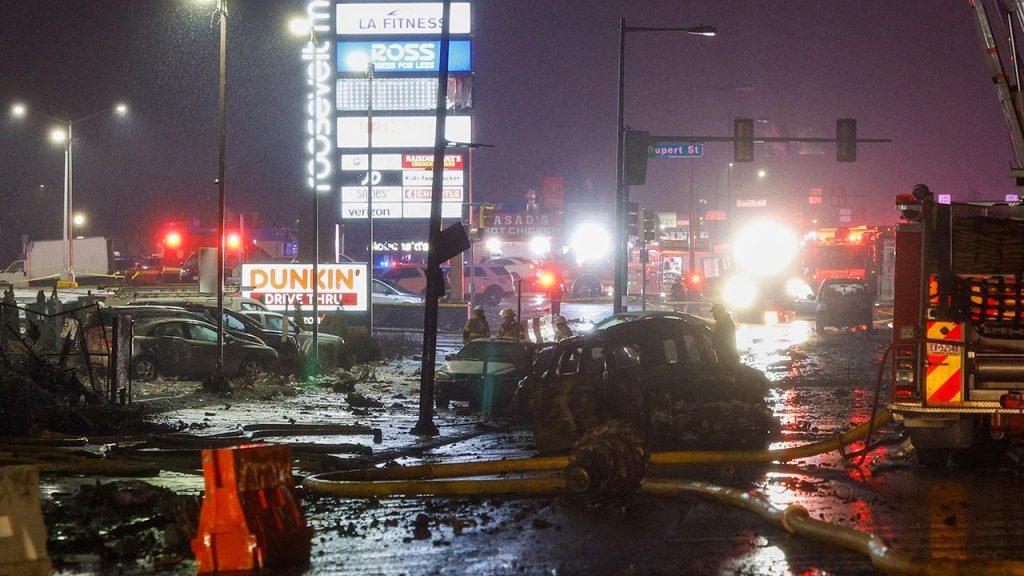The National Transportation Safety Board (NTSB) achieved a significant breakthrough in their investigation of the fatal Learjet 55 crash in Philadelphia on January 31st by recovering the crucial “black box” components. These components, specifically the cockpit voice recorder (CVR) and the enhanced ground proximity warning system (EGPWS), hold invaluable data that can help unravel the sequence of events leading to the tragedy. The CVR, discovered eight feet beneath the primary impact point, captures conversations and sounds within the cockpit, providing insights into the crew’s actions and any potential anomalies during the flight. The EGPWS, a system designed to alert pilots of impending terrain collisions, might contain additional flight data that could prove crucial in understanding the aircraft’s trajectory and the factors contributing to the crash. Both devices will undergo meticulous analysis at the NTSB’s Vehicle Recorders Laboratory in Washington, D.C.
The recovery of the black box components is a pivotal step in the complex process of piecing together the puzzle of the Learjet crash. Flight data recorders and CVRs, often referred to as the “black boxes” due to their historical bright orange color for enhanced visibility amidst wreckage, serve as indispensable tools for accident investigators. Their location within the aircraft’s tail section is strategically chosen to maximize their chances of survival in a crash, given that the tail is statistically the most resilient part of the plane. These devices record vital flight parameters like altitude, speed, heading, and conversations within the cockpit, providing investigators with a wealth of information to reconstruct the events leading to the accident.
The Learjet 55, operating as a medical evacuation flight under the name Jet Rescue Air Ambulance, was en route from San Diego, California, to Springfield-Branson National Airport in Missouri when it crashed near the Roosevelt Mall in Philadelphia, claiming the lives of seven individuals and injuring 22 others. Among the deceased were four crew members, a pediatric patient and her mother (both Mexican nationals), and an individual in a car on the ground at the time of the crash. The aircraft, which took off from Gillespie Field in El Cajon at 1:13 a.m. PST, encountered problems and diverted to Philadelphia around 6:24 a.m., eventually crashing near Northeast Philadelphia Airport.
The recovery effort also focused on securing the aircraft’s engines, which have been successfully retrieved from the crash site. These engines will undergo rigorous examination to determine if any mechanical malfunctions played a role in the disaster. The remaining wreckage will be transported to a secure facility in Delaware for further analysis. This comprehensive examination will encompass various aspects, including structural integrity, systems functionality, and any potential pre-existing conditions that could have contributed to the crash.
The search for a missing individual, 38-year-old Jason Rodriguez, continued following the crash. Rodriguez was reportedly in the vicinity of the Roosevelt Mall at the time of the incident, and his family last heard from him while he was shopping. The authorities are actively working to determine if his disappearance is related to the plane crash. His absence underscores the wide-ranging impact of such tragedies, affecting not only those directly involved in the flight but also individuals in the surrounding area.
The NTSB investigation is a comprehensive process that aims to determine the probable cause of the crash and prevent similar incidents in the future. The information gathered from the black boxes, the aircraft wreckage, and witness accounts will be meticulously analyzed to establish a complete understanding of the chain of events leading to the tragedy. This investigation will likely take considerable time and involve numerous experts across various disciplines, including aircraft systems, human factors, and meteorology. The findings will be publicly released in a final report, detailing the probable cause of the crash and offering safety recommendations to improve aviation safety.


